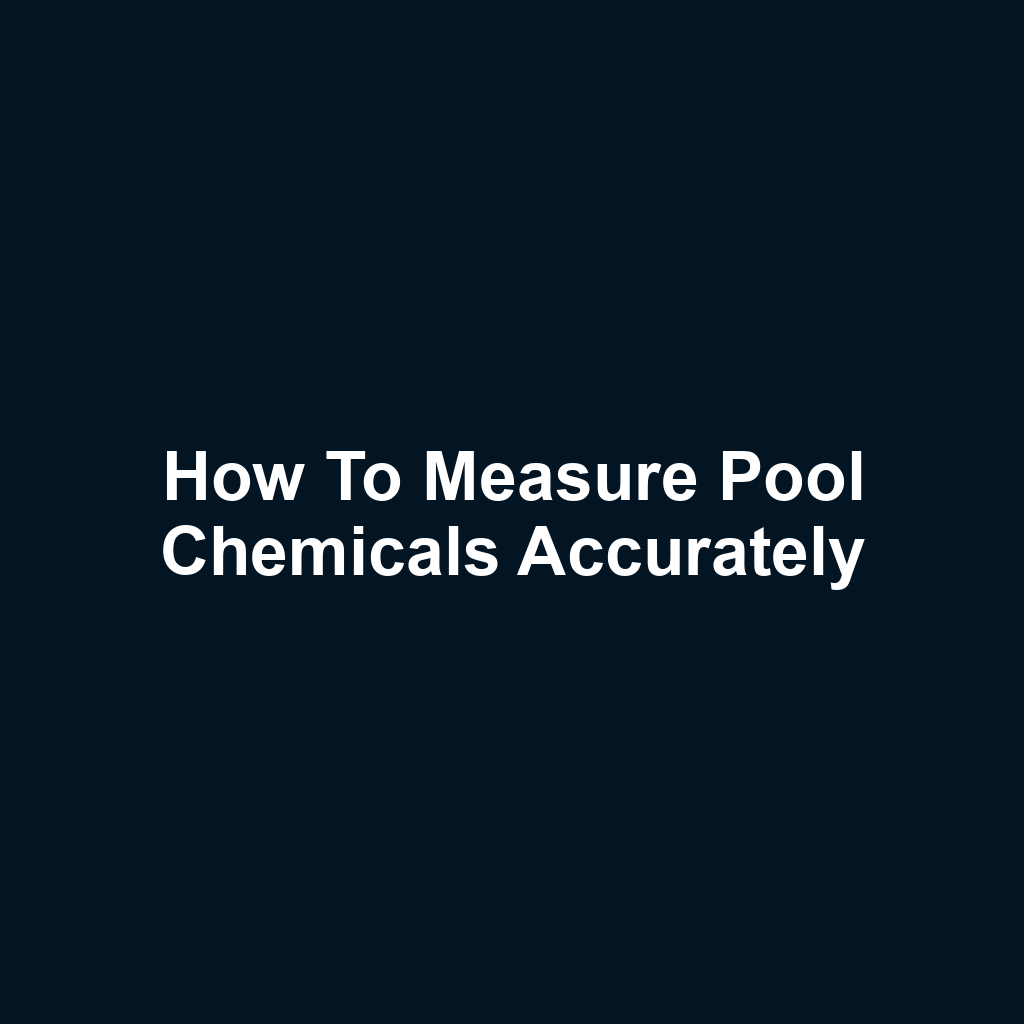When it comes to maintaining a safe and enjoyable swimming environment, knowing how to measure pool chemicals accurately is essential. Many pool owners often struggle with achieving the right balance, leading to potential health risks and inefficient water treatment. By choosing the right testing kits and understanding the nuances of chemical balance, they can ensure their pool remains pristine. This article guides readers through step-by-step measurement techniques, highlights common mistakes to avoid, and offers helpful tips for maintaining accurate levels. With the right knowledge, anyone can confidently manage their pool’s chemical needs.
Key Takeaways
Regularly monitor pH, alkalinity, and chlorine levels to prevent skin irritation and algae growth.
Use high-quality testing kits and follow manufacturer instructions closely for accurate results.
Collect water samples from elbow depth and avoid surface contamination during testing.
Keep a log of test results and establish a consistent testing schedule for optimal pool maintenance.
Choosing the Right Testing Kits
Choosing the right testing kits can significantly impact the accuracy of pool chemical measurements. Many pool owners overlook the importance of selecting high-quality kits. They often think that all testing kits are created equal, but that’s not the case. A reliable kit can provide precise readings, helping to maintain optimal water conditions. Conversely, a subpar kit can lead to miscalculations and potential issues. It’s essential for pool owners to consider factors such as ease of use and the range of chemicals tested. Some kits focus solely on pH levels, while others cover a broader spectrum. Reading reviews and comparing brands can also aid in making an informed decision. In the end, understanding chemical balance is crucial for successful pool maintenance.
Understanding Chemical Balance
Understanding chemical balance is essential for maintaining a safe and enjoyable swimming environment, as it ensures that the water remains free of harmful contaminants. It’s crucial to monitor pH levels, alkalinity, and chlorine concentrations regularly. If these levels are off, swimmers might experience skin irritation or eye discomfort. Moreover, improper chemical balance can lead to algae growth, cloudiness, and even damage to pool equipment. Regular testing helps in identifying any imbalances before they escalate. Many pool owners underestimate the importance of maintaining proper chemical levels. They often assume that clear water equates to safe water, which isn’t always the case. Understanding how different chemicals interact can also aid in achieving optimal water quality. Therefore, it’s important to follow step-by-step measurement techniques for accurate results.
Step-by-Step Measurement Techniques
Accurate measurement techniques ensure that pool chemicals are balanced effectively for safe swimming conditions. To begin, he should gather all necessary tools, including test strips or liquid test kits. Next, he’ll collect a sample of pool water, ensuring it comes from elbow depth to avoid surface contamination. After that, he’ll follow the instructions provided with the testing kit to ensure precision.
Once the test is complete, he’ll compare the results with recommended chemical levels. If any levels are off, he’ll calculate the required amount of chemical to add. He should then measure the chemicals carefully, using a clean, dry container for accuracy. After adding the chemicals to the pool, he’ll wait the recommended time before retesting. Finally, he’ll maintain a regular testing schedule to keep the pool in optimal condition.
Common Mistakes to Avoid
Many pool owners often overlook the importance of checking expiration dates on test strips, leading to inaccurate readings. They sometimes assume that all test strips are created equal, neglecting to consider specific instructions for different brands. Some may not rinse their test equipment before use, which can contaminate the results. Additionally, it’s common for individuals to test water at different times of the day, causing inconsistencies in measurements. Others might forget to store their chemicals properly, exposing them to extreme temperatures. It’s also easy to misinterpret color charts, resulting in incorrect assessments of chemical levels. Many fail to account for recent pool activities, such as heavy usage or chemical additions, which can skew results. Furthermore, they often overlook the importance of using the correct amount of water when testing. All these mistakes can lead to imbalances in the pool chemistry. To avoid these pitfalls, it’s essential to consider some effective tips for maintaining accurate levels.
Tips for Maintaining Accurate Levels
Regular testing of pool water ensures that she’s maintaining accurate chemical levels. It’s essential for her to use a reliable test kit, as not all kits provide the same accuracy. She should always follow the manufacturer’s instructions for the best results. Keeping a log of her test results can help her track changes over time. It’s important for her to test at the same time of day to ensure consistency. She often checks the water after heavy use or rain, as these factors can alter chemical balance. Using pool water samples from the same depth can also contribute to more accurate readings. Additionally, she needs to ensure her test reagents are fresh and not expired. By maintaining a routine, she can effectively manage her pool’s chemistry.
Conclusion
In summary, accurate measurement of pool chemicals is essential for ensuring a safe and enjoyable swimming experience. By selecting high-quality testing kits and following proper procedures, pool owners can maintain optimal water conditions. Regular testing and keeping track of results can help identify imbalances before they become problematic. Avoiding common mistakes and being consistent in testing practices will lead to better outcomes. Ultimately, a well-maintained pool contributes to the overall well-being of its users.
If you’re looking to enhance your vehicle’s functionality, consider checking out our guide on how to install cab lights on a Ram 2500. This informative resource will provide you with step-by-step instructions to improve your truck’s visibility and style. For more details, visit the homepage.
